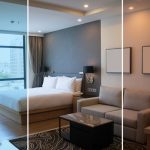How CCT Influences Shoppers’ Moods and a Retailer’s Atmosphere
 There are countless gimmicks retail stores use to lure in shoppers and move merchandise. Discount sales, promotions, advertising posters and coupons top the list.
There are countless gimmicks retail stores use to lure in shoppers and move merchandise. Discount sales, promotions, advertising posters and coupons top the list.
Smart architects and lighting designers know a more effective way to control the shopper’s experience: use a retail space’s lighting to your advantage.
Research shows that LED retail lighting impacts how customers perceive a store’s quality, space and character.
It also influences how much time they spend shopping, where they stroll, what items they look at and how likely they will go from “just browsing” to walking out with their hands full.
Most importantly, it makes or breaks how shoppers feel when they enter.
Do they feel welcome? Or are they in the right mood?
What kind of mood do you want them to be in?
The proper LED lighting design and technology can do what even the best rebates and bottom-of-the-barrel prices cannot do: subconsciously influence consumer behavior and set the store’s tone.
Research shows that the primary way lighting does this is via its correlated color temperature (CCT).
What is CCT?
According to the Lighting Research Center (LRC), the industry recommends using CCT to achieve a primary objective of truly effective retail lighting: setting the store’s atmosphere.
CCT is how the temperature of light is measured. All light has a temperature, which is expressed in degrees Kelvin (K).
The lower the temperature, the warmer the light feels. The higher the temperature, the cooler the light appears.
Take, for instance, the warm light of an inviting fire or an intimate outing at a nice high-end restaurant with classy dim lighting. This kind of lighting would be a CCT of 2,000 to 3,000K. The lighting that it emits is more in the red, orange and yellow range.
On the other hand, cool light has a high color temperature, traditionally 4000K or higher, and it emits more light in the blueish color range.
When you think of a cooler color temperature, think of the crisp white or blue light of a school hallway and how it makes you feel.
How CCTs impact shoppers
Lighting temperatures have a significant impact on humans, especially light on the blue end of the spectrum.
Warmer light stimulates relaxation, intimacy, a “take-your-time” mindset. Cooler blue light, however, makes us feel more alert. Shoppers tend to move at a faster pace.
Few elements set a tone, give emotion and subconsciously alter the mood of a customer like CCTs.
The question is, given your brand, what kind of atmosphere are you trying to create?
Do you want to invite people to an intimate, cozy setting, like Abercrombie and Fitch? Or should the space convey an energetic, clean atmosphere, like an Apple store?
Think about who your audience is and how you want them to feel when they are in your store.
How CCTs highlight the color of your retail space
It is a good idea to select a color temperature that complements the color of your intended retail environment.
For instance, if you have blue, silver or white colors in your space, you may want to consider cooler color temperatures.
Alternatively, if you have wood tones, golds or reds, you may want to consider warmer color temperatures.
If you have neutral tones in your space, the color of the lighting can easily swing the feel of your space from warm and inviting to energetic and active.
Another thing: Carefully consider your products look when displayed. If you are designing for a clothing or jewelry retailer, think about how they will look when tried on.
Jewelry displays, for instance, especially diamonds or silver, look best under a higher CCT light. However, if you are trying on clothes in a dressing room, a lower CCT works best.
Want to learn more?
To learn about how lighting can influence shoppers’ perception of a brand, its quality and its colors, read “What Are 8 Common Retail Lighting Mistakes?“

